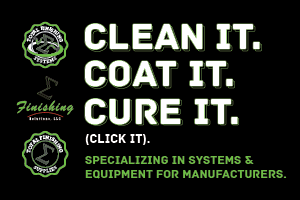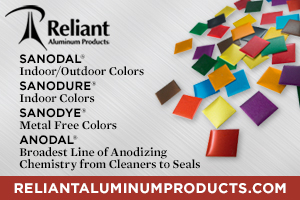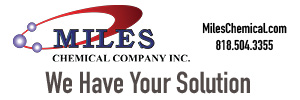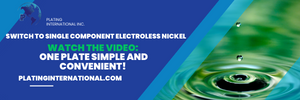When Park Kersman purchased his family-owned Lorin Industries in 2006, he made a fairly bold statement when he closed the deal to buy the aluminum anodizer.
 Park Kersman“I wasn’t qualified to run the business,” says Kersman, whose grandfather founded the Muskegon, Michigan coil and batch anodizer in 1943, which has over 400,000 square feet of space.
Park Kersman“I wasn’t qualified to run the business,” says Kersman, whose grandfather founded the Muskegon, Michigan coil and batch anodizer in 1943, which has over 400,000 square feet of space.
Kersman felt fortunate to have the recently hired President of Lorin become his mentor for close to 10 years. Once his mentor was confident in his ability to lead the organization, he became the president of his company, but he was already thinking bigger and globally for Lorin Industries.
The proof is one of his first major projects, which he led the company into: a complete restoration and resurfacing of the Louisiana Superdome after Hurricane Katrina caused significant damage in 2010. The project was a major undertaking, requiring 365,000 square feet and 400,000 pounds of aluminum exterior wall cladding, which was roll-formed and placed on the building.
Collaborating with Prestigious Architectural Firms
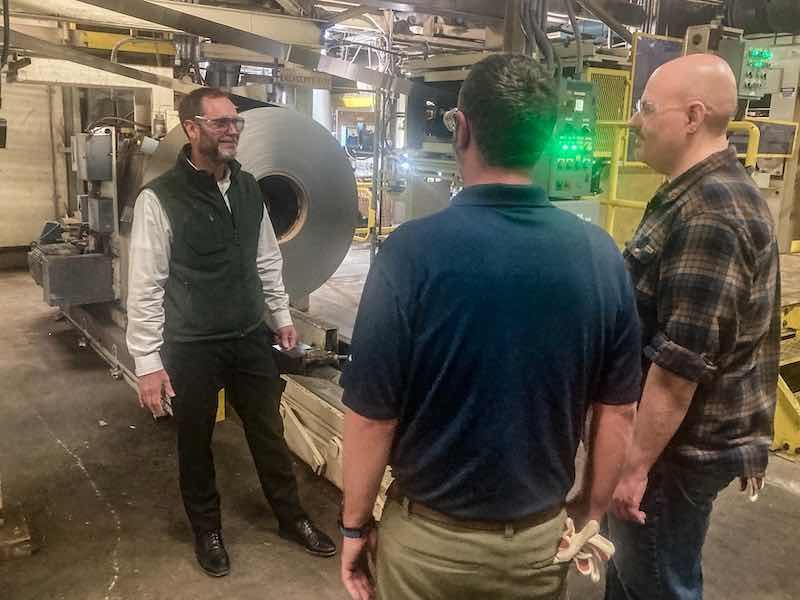 Park Kersman meets with some of his team members on the anodizing production floor.This project is one of many where Lorin Industries has collaborated with some of the most prestigious names in architecture, design, and construction; the Michigan company has quickly established a reputation in the architectural market.
Park Kersman meets with some of his team members on the anodizing production floor.This project is one of many where Lorin Industries has collaborated with some of the most prestigious names in architecture, design, and construction; the Michigan company has quickly established a reputation in the architectural market.
Kersman and his Lorin Industries team have gone on to work with legendary architects such as Zaha Hadid and others on some of the most unique—and challenging—buildings around the world.
“In China, many architects wanted to make a name for themselves, so they were going out there with some unique designs,” Kersman says. “And that was a lot of fun, but we’re starting to see that in the U.S., and an example of that is the Olympic Paralympic and Museum in Colorado Springs, and we were fortunate to be a part of that one.”
“We had been away from batch for well over 50 years. And so it was an interesting education in getting back into batch.”
The architect is working to mimic the stretches and angles of an athlete, showcasing stretching and movement.
“And that’s how that building was designed with that in mind,” Kersman says. “It is some really fun stuff to be a part of, and we’ve been fortunate that they always come to us with a bit of a different twist and something unique they can call their own. That’s where we get excited because we get to innovate in a way that supports their vision.”
Back to its Roots with Batch Anodizing
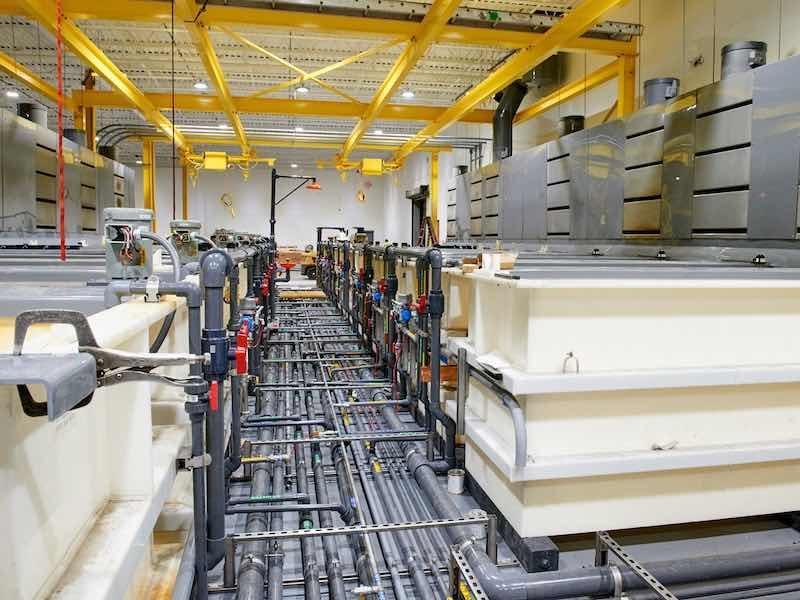 Lorin Industries returned to its roots by installing a new batch anodizing line to enhance its services.However, while Lorin Industries has worked diligently on a global scale to establish itself as a leader in the coil anodizing sector, it has recently returned to its roots by installing a new batch anodizing line to enhance its services.
Lorin Industries returned to its roots by installing a new batch anodizing line to enhance its services.However, while Lorin Industries has worked diligently on a global scale to establish itself as a leader in the coil anodizing sector, it has recently returned to its roots by installing a new batch anodizing line to enhance its services.
Christened in early 2024, it enables Lorin to meet the needs of its current coil-to-coil customers with batch-anodized parts. New customers requiring batch anodizing can now access Lorin’s premier coil anodizing process.
Kersman says the line will increase opportunities for customers in various industries — including automotive, aerospace, military, toys, medical devices, consumer goods, and more — to access Lorin’s premium anodizing process.
“We had gotten away from batch by putting a pretty hard focus on the coil for years and years,” he says. “We were looking for ways where we could expand our capabilities and our portfolio at the same time, and anodizing is something that we know. We had been away from batch for well over 50 years. And so it was an interesting education in getting back into batch.”
His grandfather, Herb Kersman, purchased a small electroplating firm in 1943—Muskegon Plating—they supported the war effort by plating cadmium and zinc. Around that time, the demand for anodized aluminum eventually prompted Herb to change his business strategies, and in 1953, they completed their first coil anodizing line.
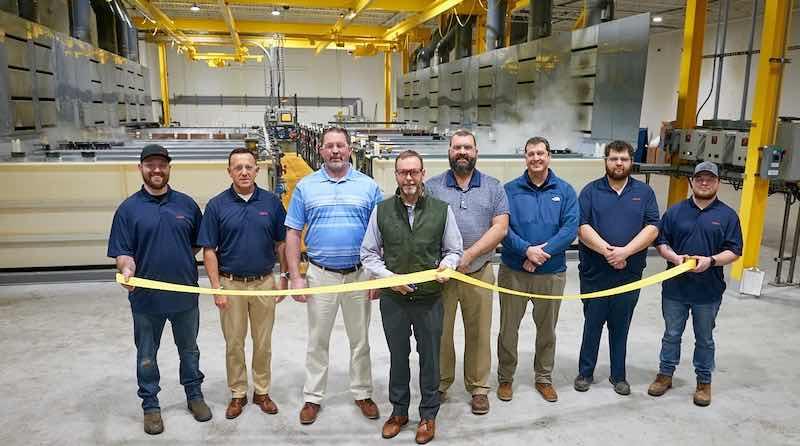 Cutting the ribbon on the new batch lines.
Cutting the ribbon on the new batch lines.
Taking Lorin Industries on a Global Scale
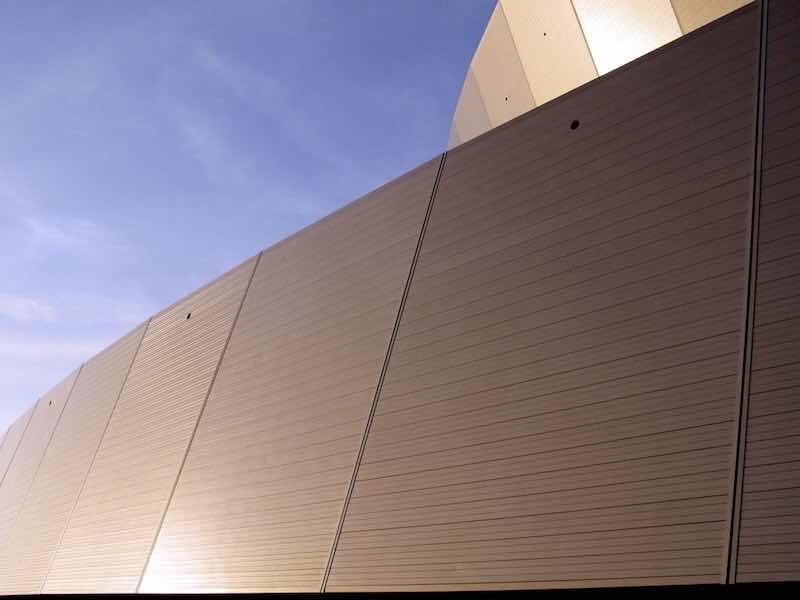 Kersman led the company into: a complete restoration and resurfacing of the Louisiana Superdome after Hurricane Katrina caused significant damage in 2010. The anodizing business expanded for Herb and his company, and they added two more coil anodizing lines in the early 1960s, along with coil slitting and shearing services. By then, Buzz Kersman had entered the family business, and he eventually purchased ownership of it in 1983. There, he began a trek of taking Lorin Industries—which the company had changed its name to Herb’s real first name—on a global scale.
Kersman led the company into: a complete restoration and resurfacing of the Louisiana Superdome after Hurricane Katrina caused significant damage in 2010. The anodizing business expanded for Herb and his company, and they added two more coil anodizing lines in the early 1960s, along with coil slitting and shearing services. By then, Buzz Kersman had entered the family business, and he eventually purchased ownership of it in 1983. There, he began a trek of taking Lorin Industries—which the company had changed its name to Herb’s real first name—on a global scale.
The company also began patenting its anodizing products, including UV-resistant ColorIn and lighting sheets PreMirror and DuraMatt.
“A majority of the business was largely tolling,” Kersman says. “And over time, we recognized there were other markets and applications. When my dad took over and ran the business for nearly 40 years, they began expanding into various markets and applications. Buzz saw the opportunity to offer solutions outside of the US, adding customers in Canada, Mexico, China, and Europe.”
While Park worked in the family business during high school and college, he had his sights set on a career far removed from the finishing and coating industry: forestry. He earned a college degree and began working for a forestry company.
“We found that only Lorin could meet the finish requirements we and our client were looking for.”
But a few years into his professional career, Park received a call from Buzz asking if he would be interested in an operational position at Lorin Industries. Soon after, Kersman had a job as a second-shift operations supervisor. He eventually moved into the quality department and the customer service division before transitioning into the sales department.
Since Kersman acquired Lorin Industries in 2006, he has continued his father’s and grandfather’s quest to maintain a focus on innovation and providing superior quality services and delivery.
Big Projects Yield Bigger Demand
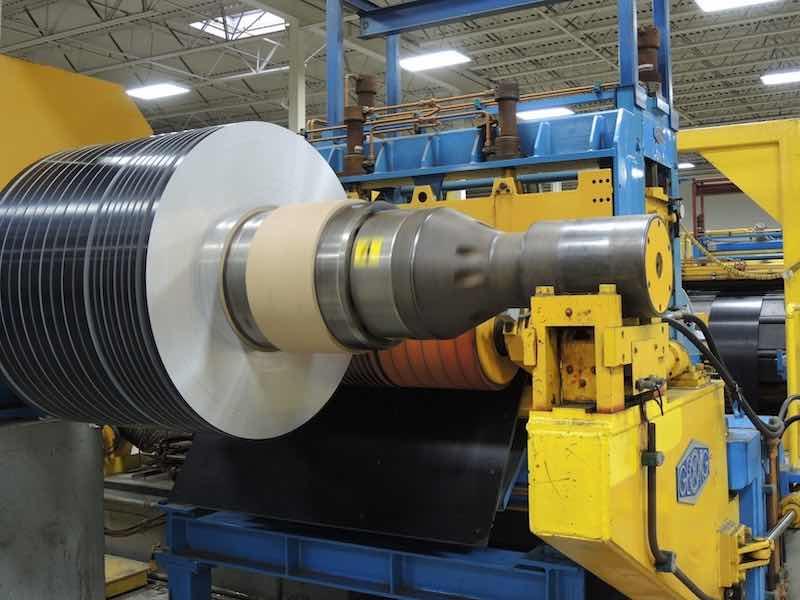 The Louisiana Superdome project presented several challenges: devising a cladding system that would address the panel replacement difficulties of the previous one and provide a finish that replicated the original finish, resembling the New Orleans Saints' gold. More importantly, the panels needed to be strong enough to pass upgraded wind testing and retain their color for many years to come.
The Louisiana Superdome project presented several challenges: devising a cladding system that would address the panel replacement difficulties of the previous one and provide a finish that replicated the original finish, resembling the New Orleans Saints' gold. More importantly, the panels needed to be strong enough to pass upgraded wind testing and retain their color for many years to come.
Lorin Industries partnered with Kalzip, a Michigan City, Indiana-based company specializing in metal roofs and wall cladding. Dan Vinet, President of Kalzip, says the Lorin anodized material formed extremely well throughout the production.
“Initially, we had reservations about roll forming an anodized finished product due to the surface hardness, but this proved to be a non‐issue in terms of cracking or crazing of the formed profile,” Vinet says. “We were so impressed by the result of the anodized finish that we have begun to promote this option as an aesthetic and functional finish to our roll-formed product line.”
Brad McWhirter, AIA, the Lead Project Manager for Trahan Architects on the project, was pleased with the workmanship provided by Lorin Industries.
“We found that only Lorin could meet the finish requirements we and our client were looking for,” he says.
Anodizing Expertise Brings “Project of the Year” Award
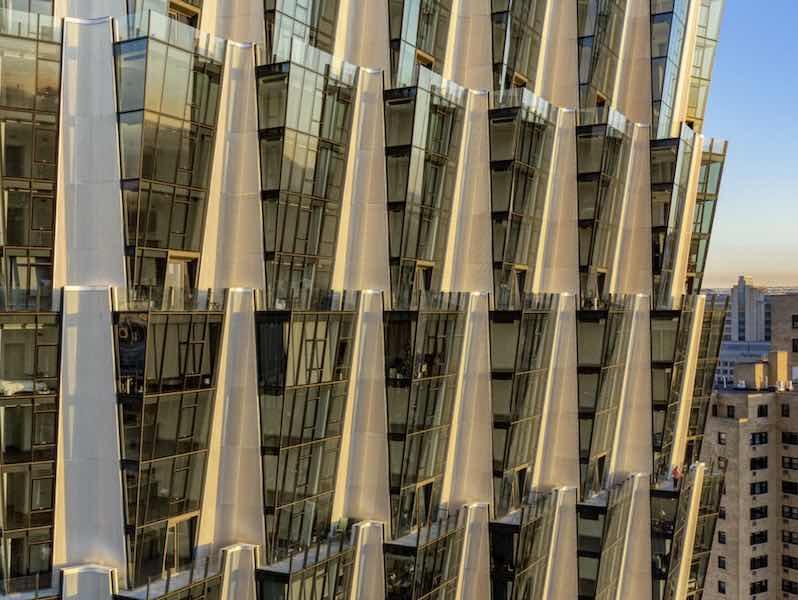 In 2016, the Owensboro Convention Center project, for which Lorin Industries played a key role, was awarded the “Project of the Year” by Metal Architecture Magazine. Trahan was involved in the design, and MetalTech USA manufactured the building panels. Lorin was tasked with finishing the exterior anodized aluminum panel rain-screen system for the roughly 100,000 square feet of vertical interlocking reveal panels.
In 2016, the Owensboro Convention Center project, for which Lorin Industries played a key role, was awarded the “Project of the Year” by Metal Architecture Magazine. Trahan was involved in the design, and MetalTech USA manufactured the building panels. Lorin was tasked with finishing the exterior anodized aluminum panel rain-screen system for the roughly 100,000 square feet of vertical interlocking reveal panels.
The exterior of the building uses Lorin’s BlackMatt ColorIn Long Line Brushed finish, while the soffits and inward-facing exterior walls use a ClearMatt Long Line Brushed finish. The juxtaposition of the two colors creates a dramatic effect that helped Trahan achieve the desired look, as the project’s siting and dark exterior skin alludes to the early tobacco barns found throughout the Kentucky region during the 1800s.
On the global stage, Lorin Industries played a major role in the Gyeongju Tower in Gyeongju City, North Gyeongsang Province, South Korea. The 17-story building was constructed with a cut-out in the center, resembling the legendary nine-story Hwanryongsa Temple’s Wooden Pagoda, which was the largest pagoda in South Korea. It features an observation lounge and exhibition hall, hosting various cultural events that draw nearly 1 million visitors annually.
“We’ve spent 60-plus years to make things more consistent and edge-to-edge consistent. Now we’ve got the market coming back to say, ‘Can you make it consistently inconsistent?’”
J.H. Lee, President of Garmco Myunghwa Ltd., presented the architect with samples of Lorin’s ClearMatt finish.
“The clear anodized finish maintained the aluminum’s reflective properties like they were looking for and did not cover it up like silver paint,” Lee says. “There are too many buildings in Korea that are painted—and you can tell.”
Foresight of Grandfather, Father, and Current Owner
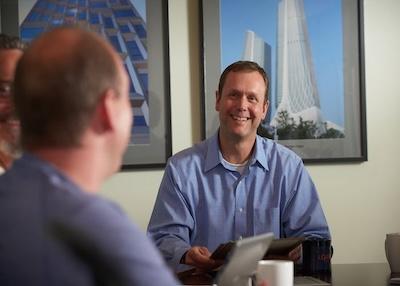 Kersman says the growth of Lorin Industries has come from the foresight of his grandfather and father, who anticipated industry needs and proactively set the company up to respond to the market demands. He plans to continue that vision moving forward.
Kersman says the growth of Lorin Industries has come from the foresight of his grandfather and father, who anticipated industry needs and proactively set the company up to respond to the market demands. He plans to continue that vision moving forward.
“ There was so much unknown, and there still is,” he says. “I think the best we can do is see the potential and envision what this can become. I look at the whole anodizing industry that way in that standardizing is still relatively new, and a lot of times, it’s so much of an unknown.”
And just as many anodizers are seeking more consistent results in their finishes, Lorin Industries had a customer who asked them to do the exact opposite, which spurred the innovation side of the applicator.
The customer asked that they produce a product that’s “consistently inconsistent,” as Kersman recalls, to give the finish a unique texture.
“We’ve spent 60-plus years to make things more consistent and edge-to-edge consistent,” He says. “Now we’ve got the market coming back to say, ‘Can you make it consistently inconsistent?’ That’s tough to get your mind around, so we developed a new product, Anozinc, with many of the looks of zinc and pewter.”
“ We look for the challenges. And then we want to provide the best solutions to those challenges.”
Anozinc is made with Lorin’s Arconic Tectur-Al and is designed specifically for exterior applications where fade resistance is crucial to the designer. The soft, natural variegated surface makes this product unique among aluminum products, Kersman says, yet it is similar to the surface finish of natural zinc without the high cost.
He says this consistently inconsistent surface quality makes it appealing to designers wanting a unique finish that differentiates them from the norm.
“The striations are a little bit different, but it’s got that “consistently inconsistent” look,” Kersman says. That was a fun project because we had to work with our process and the suppliers to figure out how to get this done.”
For Lorin Industries, the challenge is to deliver what the market ultimately wants from a design perspective. Kersman says they have been successful in this regard because the company can build awareness and understanding of the product, enabling customers to recognize the value it can bring to their business and application.
“ We look for the challenges,” he says. “And then we want to provide the best solutions to those challenges.”
Visit https://www.lorin.com.
















